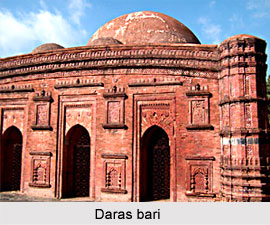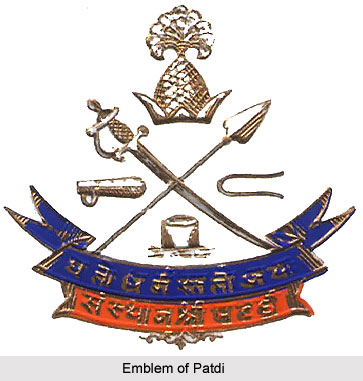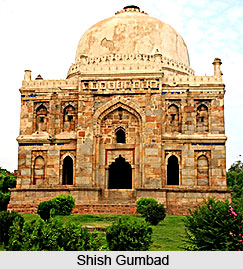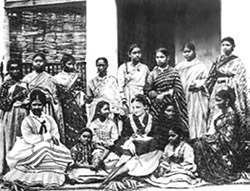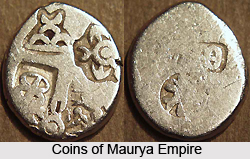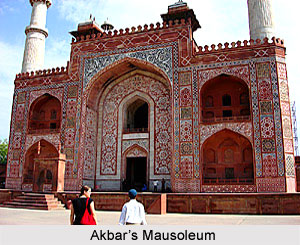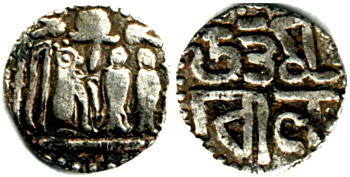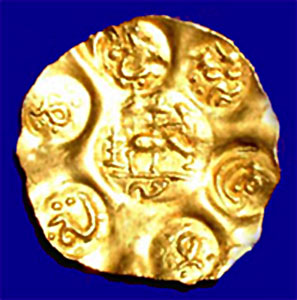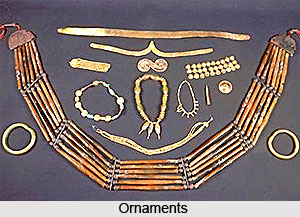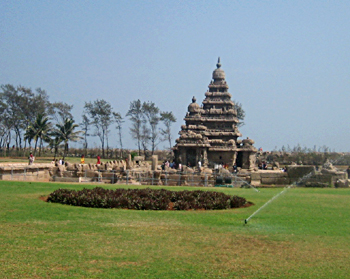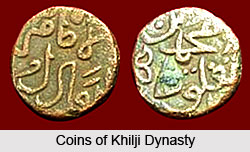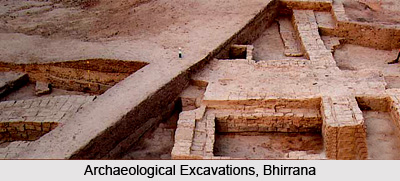 Bhirrana village is a famous archaeological site of the Indus Valley Civilization dating back to 7380 BCE located in Fatehabad District, Haryana and is also referred to as `Birhana`. This village is situated at a distance of nearly 14 km from the north-eastern portion of the district headquarter of Fatehabad, Bhuna Road and about 220 km from the north-western part of Delhi. This Indian village is amongst the several sites which are existent alongside the Saraswati River systems. The site was excavated by the Excavation Branch-I, Nagpur, Archaeological Survey of India and excavation activities continued during the period from the years 2003 till 2004, 2004 to 2005 and 2005 till 2006. An old mound has been found from this spot which measures 190 metres from north to south, has a height of 5.50 metres and 240 metres towards east to west.
Bhirrana village is a famous archaeological site of the Indus Valley Civilization dating back to 7380 BCE located in Fatehabad District, Haryana and is also referred to as `Birhana`. This village is situated at a distance of nearly 14 km from the north-eastern portion of the district headquarter of Fatehabad, Bhuna Road and about 220 km from the north-western part of Delhi. This Indian village is amongst the several sites which are existent alongside the Saraswati River systems. The site was excavated by the Excavation Branch-I, Nagpur, Archaeological Survey of India and excavation activities continued during the period from the years 2003 till 2004, 2004 to 2005 and 2005 till 2006. An old mound has been found from this spot which measures 190 metres from north to south, has a height of 5.50 metres and 240 metres towards east to west.
Archaeological Excavations at Bhirrana
Artefacts belonging to various historical periods including Period IA depicting Hakra Wares Culture, Period IB reflecting the early Harappan culture, Period IIA belonging to early Mature Harappan age and Period IIB reflecting mature Harappan culture.
Period 1A: Hakra Wares Culture
Bhirrana is the very first region in India which possesses numerous artefacts of the Hakra Ware culture which date back to the early Harappan era. Certain old structures have been embedded in the natural soil in the form of subterranean dwelling holes. Yellow alluvial soils of the river valley of Saraswati have been placed over the floor and walls of the pits. Stone saddles, a copper bangle, copper arrowhead, terracotta bangles, quern and beads of steatite, carnelian and lapis lazuli have been discovered. Brown-on-Buff Wares, Mud Applique Wares, Black-on-Red Ware, Tan or Chocolate Slipped Wares, Plain Red Wares, Bichrome Wares consisting of paintings with white and red pigments are amongst the pottery crafts found here.
Period IB: Early Harappan Culture
During the Early Harappan period, the site was devoid of fortified walls and the homes were composed of mud bricks in the ratio 3:2:1, while the pottery items of this region portray the six different fabrics of Kalibangan. Other interesting objects revealed are pendants, bull figurines, copper rings and bangles, beads of lapis lazuli, jasper, carnelian, terracotta, shells, steatite, rattles, terracotta bangles, sandstone marbles and ponders, sling balls, bone crafts, gamesmen and a quarter-foil shaped seal made from copper rings and bangles, arrowheads and shells.
Period IIA: Early Mature Harappan Culture
Bhirrana underwent certain modifications during the age of the Mature Harappan period. A fortification wall surrounded the major part of this settlement and the Lower Town, Citadel was established. The mud brick structures were slightly based away from the northern part of the city and the roads, by-lanes and lanes were created in an orderly manner. Pottery-ware found here exhibit a fusion of that existent on the Mature Harappan and the Early Harappan age. Terracotta figurines, chisel, copper bangles, beads of semi precious stones, fish-hook, shell bangles, faience and terracotta bangles have also been excavated from this region.
Period IIB: Mature Harappan Culture
During the Period IIB, Bhiranna bore evidences of being a well-developed city of the Harappan Civilization. Stone artefacts, copper and terracotta bangles, terracotta animal figurines, steatite seals, shell and faience bangles, beads of steatite, carnelian, agate and faience celts of copper and terracotta spoked wheels are the other artefacts found here. On a potsherd, replica of the renowned `Dancing Girl of Mohenjodaro` had also been discovered, which is engraved on the potsherd in the form of graffiti. Mud bricks have been employed to construct the fortification wall of Bhirrana. Sun-baked bricks have been utilized by the houses. The houses used to be made distinct through some wide, linear roadways. The presence of a `tandoor` or circular structure of baked earth which implies a traditional community kitchen in the rural region has also been identified.
Other Archaeological Findings at Bhirrana
Different forms of pottery artefacts including idols of dancing girls and `mermaid` types deities have been unearthed from Bhirrana, while the dancing girls are quite similar to that of the bronze dancing girl of Mohenjodaro. The mermaids might have been a resemblance of water nymphs, `Apsaras` which indicate that the people of Bhirrana might have indulged in the rituals and rites associated with water.


